Chrysanthemums are real show-stoppers in the garden, with bushes bursting with colourful blooms through the autumn months. With their main flowering season around May and their nickname of “mums”, they are synonymous with Mother’s Day and make a beautiful gift for the occasion.
Here are some tips on growing chrysanthemums, how to maintain these colourful plants and even how to make chrysanthemum tea.
More...
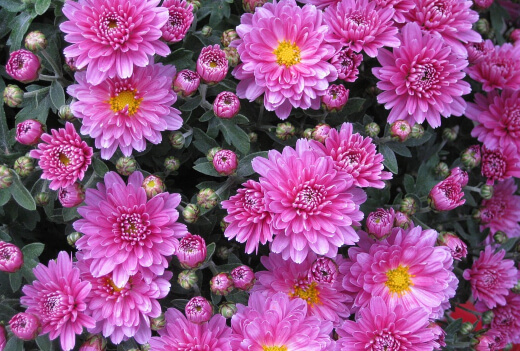
Getting to Know Chrysanthemums

Chrysanthemums are hardy to semi-hardy perennials that are part of the Compositae family. They grow well in containers, in sunny spots indoors and in flowerbed borders.
Native to East Asia and North-eastern Europe, they come in countless varieties and cultivars and have spread across the world, appearing in gardens all over Australia.
From white and yellow to pink, purple, rust and even green, chrysanthemums come in every colour of the rainbow. Easy to grow, low maintenance and highly-rewarding, chrysanthemum plants create a splash of colour in almost any garden.
How to Grow Chrysanthemums
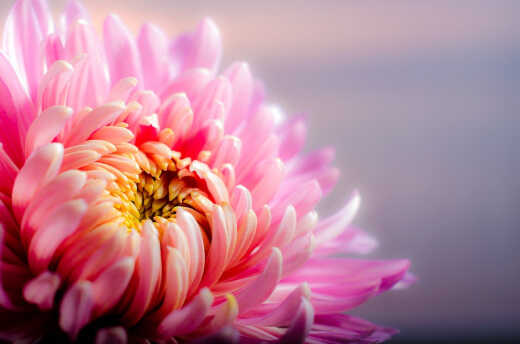
For the best results, chrysanthemums need to be positioned, planted and cared for the right way.
Sunlight Preference
To get the best growth and the most blooms, plant your seedlings in a sunny spot. They are very sun-tolerant plants and require about 5-6 hours of direct sunlight daily.
Soil
These plants enjoy well-drained sandy or loamy soil with a soil pH of about 6.5. It’s a good idea to mix in organic compost, bark chips and leaf mould before planting your seedlings.
Watering Needs
Chrysanthemums are susceptible to mildew, so they need to be kept dry and in an area with good air circulation. Water well in the morning whenever the first few centimetres of soil is dry. Avoid watering in the evening.
Climate
Chrysanthemums grow in almost any climate, but are happiest in hot, sunny climates as they can develop mildew in humid environments.
Fertilising Chrysanthemums
These plants are pretty tough and have low nutrient requirements, especially if the flower bed is well prepared with compost. However, you can lightly feed them with a balanced all-purpose fertiliser during the spring and summer for the best results.
Check out our review on the best compost bins in Australia for 2024 to help in your composting.
Tips on Planting Chrysanthemums
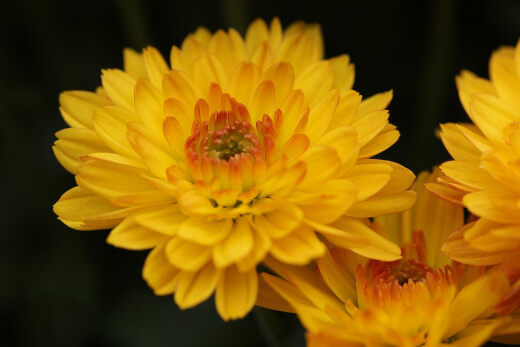
It’s best to plant your chrysanthemums in early spring after the last frost has passed, as this will get the plants established and ready for the autumn blooming season.
If you aren’t in an area that gets frost, you can plant them any time of year, keeping in mind that the roots need about 6 weeks to establish themselves and may require more watering if you plant them in the summer.


Get Your Free Guide:
Master Growing Australian Natives eBook
A Must Have Complete Guide for Every Australian Garden
Get Your Free Guide:
Master Growing Australian Natives eBook
A Must Have Complete Guide for Every Australian Garden
Here’s how to plant them:
- Prepare your flowerbed with organic compost, digging it over well.
- Dig a hole about twice the size of the root ball.
- Plant at the same depth as they were in their pot – do not bury the stem of the plant or it will rot. Pat the soil down firmly.
- Space seedlings about 40-50cm apart depending on the variety’s spread.
- Larger varieties may require stakes or support.
- Water well for the first 6 weeks, then once a week or as the weather allows.
Pruning and Chrysanthemum Care Guide
You’ll want your chrysanthemums to grow thick and bushy, so pinch off the tips of the growth (about 2cm) when they reach about 15cm tall and again at 30 cm.
To do this, simply use your fingers and fingernails to cut off tender new growth, just above the new leaf nodes. Stop pinching the growth back at about 100 days before the autumn blooming season.
It’s important to deadhead the blooms as they die off, as this extends their blooming season well into winter. Don’t cut the plant back in the winter.
Instead, clean it up a little and leave it alone to naturally die off and it will rebound strongly in the spring. Heavy pruning can actually stunt the plant. Most varieties will deliver 3-4 seasons of quality blooms before the plant should be replaced.
How to Propagate Chrysanthemum Plants

There are three ways to propagate your chrysanthemum plants – by taking cuttings, through seeds, and through plant division.
Dividing Chrysanthemum Plants
Chrysanthemums like to be divided up as it gives the new plants space to grow. You can divide your chrysanthemums every 3 years or so.
- After the last spring frost, look for shoots that are about 10cm tall.
- Dig them up carefully, using your fingers to gently divide them up.
- Remove all woody or dead parts.
- Plant healthy divisions into a prepared flower bed.
How to Propagate Chrysanthemums from Cuttings
- Cut off new shoots that are about 10-15cm long using sterilised scissors or pruning shears.
- Remove the leaves from the bottom half of the cutting.
- Dip into a root growth hormone.
- Plant into a small container of well-draining soil.
- Place in a bright light area and keep the soil moist.
- Plant when you see new leaf growth appearing.
Propagating Chrysanthemums from Seed
- Sow seeds in a prepared flowerbed either in late autumn if outdoors, or in winter if indoors or in a frost free area.
- The seeds will start to grow when the soil reaches 23°C, and takes 1-3 weeks.
- Keep the soil moist.
How to Make Chrysanthemum Tea
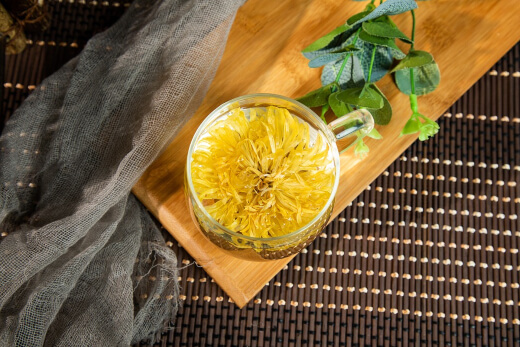
- Harvest fresh chrysanthemum flowers
- Let them dry in a sunny spot or use a food dehydrator.
- Once dry, store them in a brown paper bag until you want to use them.
- Add several flowers to 3 cups of boiling water and leave to steep for 5 minutes. The more flowers you add, the stronger the tea will be.
- Add a teaspoon of honey for sweetness and drink as is.
Chrysanthemum Frequently Asked Questions
What is Chrysanthemum good for?
Chrysanthemum is commonly used to treat chest pain, high blood pressure, fever, cold, headaches and swelling. As a beverage, Chrysanthemum is a popular summertime tea in southern China.
Are Chrysanthemums poisonous to touch?
For some people, Chrysanthemums can cause severe skin irritation including reddening, scaling and even blisters. Be sure to avoid dealing with these plants if you have any reactions.
Do Chrysanthemums prefer sun or shade?
These perennials prefer warm, sunny and sheltered locations with fertile, well-drained soil. They also enjoy regular water and need to be protected from frost.
Can you drink Chrysanthemum tea every day?
It is recommended to drink this tea only twice a week. You should avoid drinking it in large quantities for extended periods.
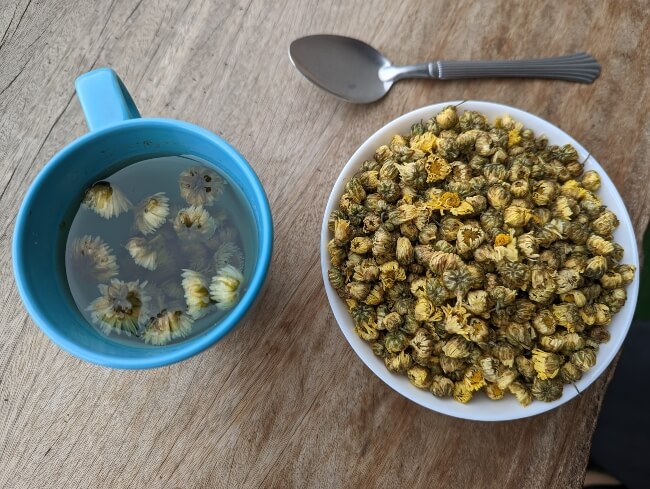
What happens when you drink too much Chrysanthemum tea?
While the tea has many benefits, there are also some side effects to look out for as well. Overconsumption can lead to allergies like skin rashes and fever in some individuals.
How long do Chrysanthemum flowers last?
Naturally, each variety can differ but these flowers will last for about four to eight weeks on average.
Are Chrysanthemums a natural insect repellent?
Yes. These plants are known to repel ticks, fleas, ants, Japanese beetles and many other common insects.
Do mums do better in pots or the ground?
These plants are ideal for containers due to their shallow root systems but they can be grown in sheltered positions in the ground as well.
How long do mums live?
The lifespan of these plants is only around three to four years. While they can last longer, they are more susceptible to winter damage with each passing year.
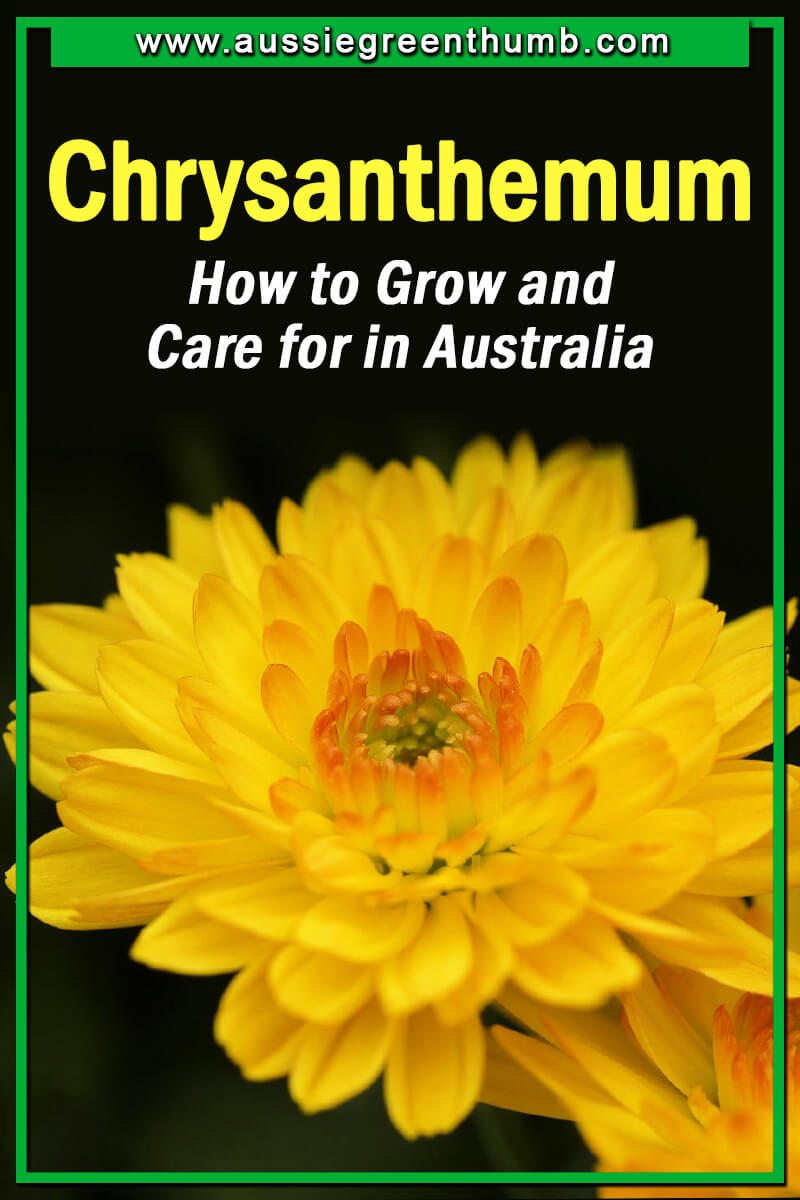
Fill Your Garden with Colourful Chrysanthemums!
Whatever your colour scheme, you’ll find varieties of chrysanthemum that will bring your garden to life, adding a rainbow of colour in the autumn months.
This Mother’s Day favourite is hardy, easy to grow and loves the sunshine, making it a popular choice for Australian gardens. If you are looking for something to pair chrysanthemum with, then check out our hibiscus, bromeliad, and myrtle growing guides.
Remember to plant in the early spring in well-draining soil, water regularly without letting the plant get too wet, and pinch back new growth in the early summer to get the best results.
If you have any questions about growing or caring for chrysanthemums, please get in touch!
Published on December 11, 2023 by Maisie Blevins
Last Updated on December 23, 2024





Hello I live in FNQ and have a quick question about taking cuttings from Chrysanthemums (in garden beds)….I have not grown them here; up north and imagine they will die or die down as the wet season kicks in…I was hoping to take cuttings from the mother plant before it possibly dies.
Do you think the cuttings will survive in pots during the wet?
will the humidity kill them off?
When do you normally take cuttings in Australia?
Have you heard of them surviving the wet season in the ground?
Many thanks for your time
Hi Vicky,
Thanks for your question.
It is certainly possible to take cuttings from the mother plant and establish them, even during the wet season. While it may not be ideal, there are ways you can help them survive your conditions in FNQ during this particular season.
As you mentioned, I would also recommend establishing the cuttings in a pot that can be moved indoors during very wet and cold weather. This process is known as overwintering.
This should ensure the cuttings don’t get too wet and that the soil doesn’t get boggy. Try to use a quality potting medium that drains well.
Regarding humidity, a relative humidity of 70-90% is optimal for growing chrysanthemums so the cuttings should do just fine whether they’re in a sunny spot outside or indoors for a few days. Just try to give them as much sun as you can.
Once the cuttings have developed and the weather has improved, you can then consider replanting them into your garden bed outdoors if that’s what you want. This should ideally be done around early spring.
In my experience, the best time to take most cuttings is late spring to early summer. You can take cuttings at other times of the year; they just tend to take a little longer to root.
I hope this information helps and I wish you all the best with your propagation!
Best regards,
Gary Clarke